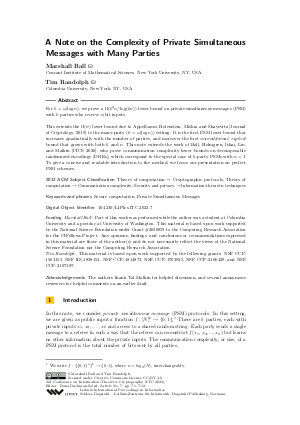LIPIcs.ITC.2022.7.pdf
- Filesize: 0.65 MB
- 12 pages

 Creative Commons Attribution 4.0 International license
Creative Commons Attribution 4.0 International license












Feedback for Dagstuhl Publishing